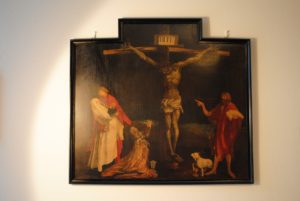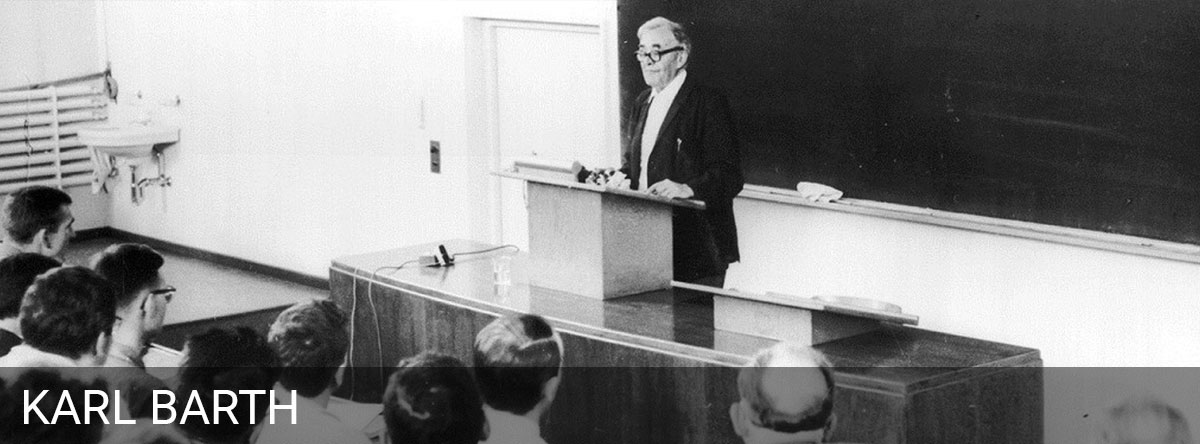The distinctive features of Karl Barth’s theology remain the subject of considerable debate and ongoing investigation. But some widely agreed upon features can be acknowledged.
Before it was anything else, Barth’s theology was a theology of the Word of God. The Word of God is, he maintained in the early years of his work on Christian dogmatics (in the 1920s and on into the 1930s), an address; a speaking of divine Person with human persons. But this theology of the Word is also “dialectical theology” – because the Word itself is never more than indirectly available to its human addressees. The Word of God comes to human beings in three “forms”: the humanity of Christ, the words of the prophets and the apostles (i.e. the canonical Scriptures) and the words of preachers. But the “forms” of revelation – even the humanity of Christ – are not “divinized” through God’s use of them in revealing God’s Self. And for that reason, revelation must never be directly identified with the “forms” through which it is divinely mediated. Put another way, revelation is never an “object” which is directly perceptible to human sensory activity (whether sight or hearing), even though God gives God’s Self to be known through “objects” of God’s own choosing. Revelation takes place in a “hiddenness” which is a function of the modality of God’s Self-revelation. To describe revelation in this way is to understand it as “dis-possessive.” The revelation of the Christian God cannot be taken under the control and management of human beings and made to serve the purposes established by human persons. Barth would continue to emphasize the hiddenness of revelation and its “dis-possessive” character throughout his life because he never ceased to be concerned with attending to the freedom of God.
In the early phases of its development, Barth’s theology was “Reformed” theology. That is to say, it stood self-consciously in that stream of the Reformation whose originating impulses were given by Huldrych Zwingli in Zürich and John Calvin in Geneva. Barth understood himself as accountable to this Reformed tradition in his efforts to further develop and think beyond it. A turning-point of sorts came with his massive revision of the classical Reformed doctrine of “double predestination” in Church Dogmatics II/2 (completed in the winter semester of 1941/1942 while teaching at the University of Basel). Barth’s revision consisted, above all, in the thesis that God elected God’s Self for “reprobation” (i.e. for the experience of the definitive destruction of sin and death in union with Jesus Christ) and salvation and blessing for all others. In taking this step, Barth had turned “double predestination” into good news, a message of hope for all humanity. Barth had also ceased to be only or merely “Reformed” and had become a “doctor of the church” for all the churches with his new and revolutionary understanding of the doctrine of election.
Barth’s mature theology is characterized by the belief that the reconciling activity of God is already effective in being performed. That is to say, what Jesus Christ accomplishes is not merely the possibility of human salvation – a possibility which is turned into actuality only at the point at which the Holy Spirit awakens an individual to faith and obedience (one individual at a time) – but its reality. Put another way, the justification, sanctification, and vocation of the Christian to discipleship are already effective for all “in Christ.” To be awakened to faith and obedience is to be awakened to our true identity in Him.
Also characteristic of Barth’s mature theology is the belief that the Church is gathered and built up in faith only in order to be sent into the world, to be a blessing to the nations by witnessing to God’s reconciling of the world to Godself in Jesus Christ. Not surprisingly, the Christian rites of baptism and the Lord’s Supper are treated under the heading of the “ethics of reconciliation” (rather than as sacraments) because they belong to the missional activity of the church. The Christian rites are performed at the point of transition from the upbuilding to the sending of the community of believers. The result is a conception of the Church that exists not for its own sake but in the world and for the world; not turned in on itself but constantly reaching out and forward.
—Written by Bruce McCormack and Kaitlyn Dugan



